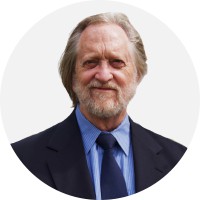The views expressed in our content reflect individual perspectives and do not represent the authoritative views of the Baha'i Faith.
In the treasuries of the knowledge of God there lieth concealed a knowledge which, when applied, will largely, though not wholly, eliminate fear. This knowledge, however, should be taught from childhood, as it will greatly aid in its elimination. Whatever decreaseth fear increaseth courage. – Baha’u’llah, Epistle to the Son of the Wolf, p. 32.
One big new axiom emerged during the early 20th century—that nurture, not nature, determines the outcome of individual lives and aspirations.
But if “human nature” includes the animating force of the spirit emanating from the human soul, then the Baha’i view of human reality would be totally at odds with this materialist view, a view that still maintains its grasp on most professional assessments of human nature.
Let’s review our quest thus far, because the fact is that we have already encountered many footprints of the gargantuan EOD—the Elephant of Death. His trail leads us down a path whose traces are bordered by a number of important signposts, some of which we have noted, but many of which we may have overlooked. These series of signs not only add up to a coherent statement of the nature of human ontology—the facts about human existence—but also are quite a lot of fun to put together.
First of all, if we are going to study the EOD in any meaningful way, we must first discover what we mean by “life.” After all, if we’re totally honest with ourselves (and each other) the big old impervious Elephant of Death has no meaning without life and living.
In fact, if we are totally logical about the entire situation, the EOD may stand impervious before us, but in another sense, he’s really not there at all. He is a figment of our imagination, just as Evil has no essential reality, nor does Cold, or Darkness, or Weightlessness. Nothingness does not have any essential reality, no essence, no properties. Nothingness is simply the absence of something, whether it be stuff or energy—both of which Einstein asserted are interchangeable.
According to divine philosophy there are two important and universal conditions in the world of material phenomena: one which concerns life, the other concerning death; one relative to existence, the other nonexistence; one manifest in composition, the other in decomposition. Some define existence as the expression of reality or being and nonexistence as nonbeing, imagining that death is annihilation. This is a mistaken idea, for total annihilation is an impossibility…
Certain elements have formed the composite creature man. This composite association of the elements in the form of a human body is, therefore, subject to disintegration, which we call death, but after disintegration the elements themselves persist unchanged. Therefore, total annihilation is an impossibility, and existence can never become nonexistence. This would be equivalent to saying that light can become darkness, which is manifestly untrue and impossible. As existence can never become nonexistence, there is no death for man; nay, rather, man is everlasting and ever-living…
Through his ignorance man fears death, but the death he shrinks from is imaginary and absolutely unreal; it is only human imagination. – Abdu’l-Baha, The Promulgation of Universal Peace, p. 88.
My point is: if you want to create cold, simply take away heat. If you want to create evil, simply take away all available goodness. You want darkness? Take away all sources of light. You want weightlessness, take away all large masses (planets, moons, and the like), something that any astronaut is deathly afraid of as he or she pokes around a shuttle on an EVA (extra vehicular activity or “space walk”). Personally, I would enjoy trying it out on a small planet where I could jump really high, like the goofy astronauts skipping around on the surface of the Moon in 1969, even though they were encumbered by really bulky space suits.
So all you need to create the EOD is to remove any source of life. Of course, there are various sorts of life—molecular, plants, animals, humans, and whatever kinds of life lie concealed from us in the metaphysical realm, should there happen to be such a placeless place.

Human death is not so hard to define, then, is it? It is the absence of life, but what sort of life? If we believe that the true source of our humanness is metaphysical, then the absence of signs of physical vitality may not mean that the human essence or personhood is dead. In fact, even determining death from a purely materialist perspective is not so easy, especially not from a legal point of view. Is the person dead when all signs of life of an autonomous sort cease, life without the assistance of machines? And if we include machine aided life in this equation, which machines are we talking about? I certainly would not feel particularly “vital” right now without my prosthetic hips, and I dare anybody to try to repossess them.
Legally, which effectively defines “medically” so long as law suits and malpractice insurance exist, death is presently defined as the point when someone flat-lines—all meaningful brain activity ceases. Some body systems may be able to function without machines, but the body cannot feed itself nor do anything else that we associate with distinctly “human” activities. But, in terms of our definition above, death is the cessation of life, at least on the physical level.
So while the essential reality of death may indeed be the absence of life, death is nevertheless a condition well worth describing. And in human terms, we are obviously not talking about just any sort of vitality or energy—after all, decomposition is also a process driven by energy. In other words, by life we mean a quality of vitality in which those faculties and attributes peculiar to the human reality are working at some meaningful and measurable level. In the next essay in this series, let’s explore that concept.
Next: Abortion, the Right to Life, and a Woman’s Right to Choose
















Comments
Sign in or create an account
Continue with Googleor